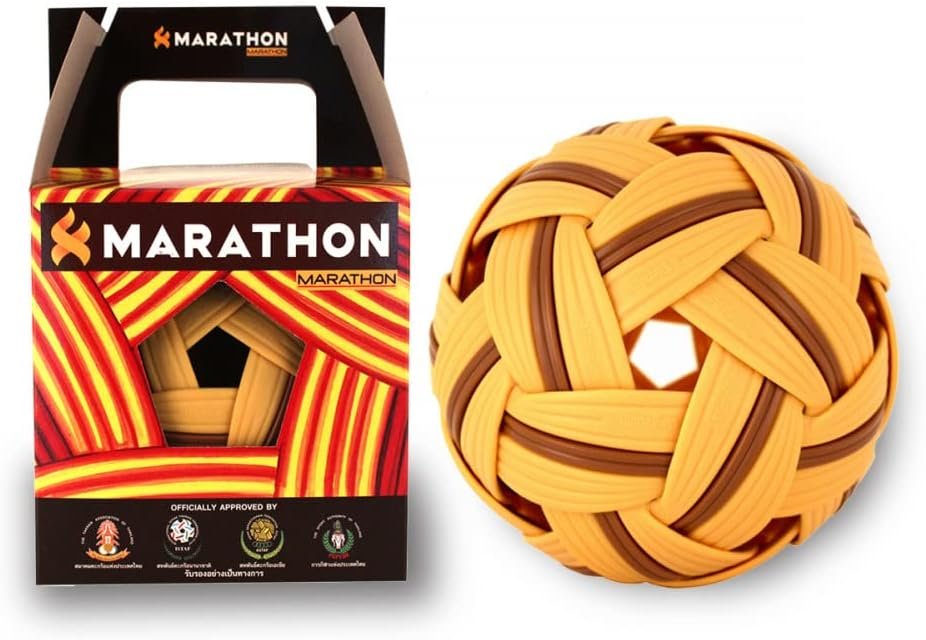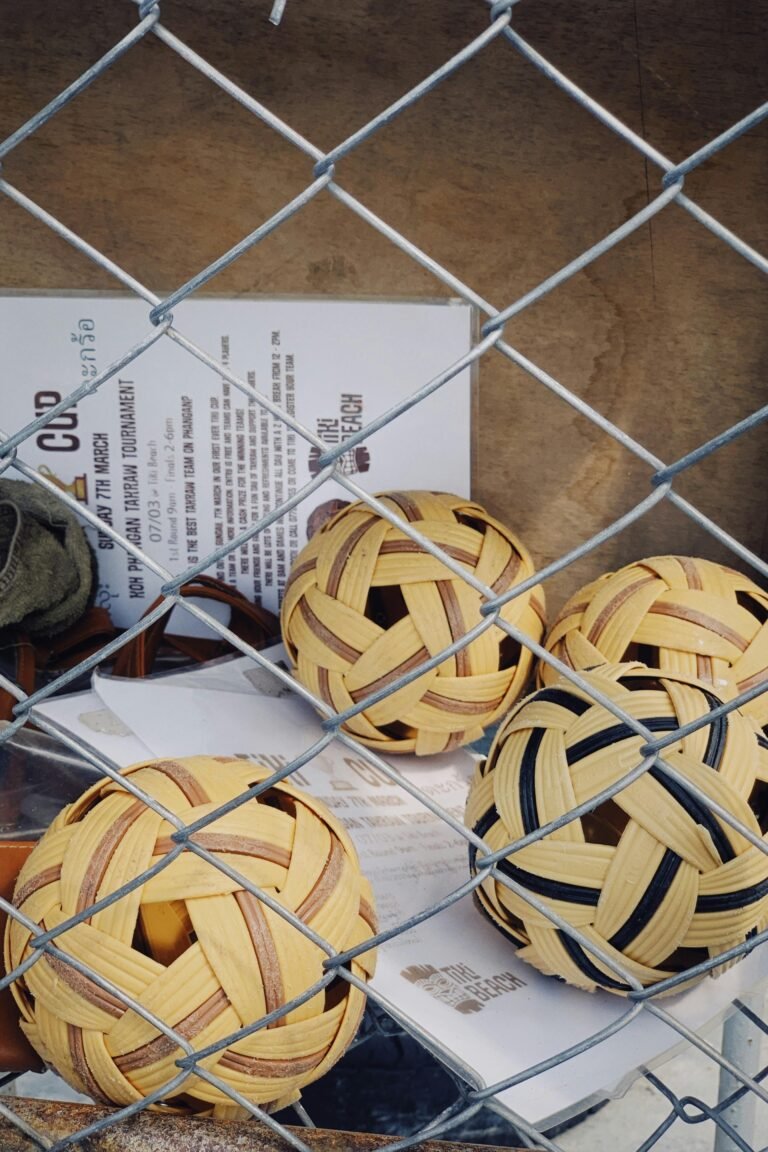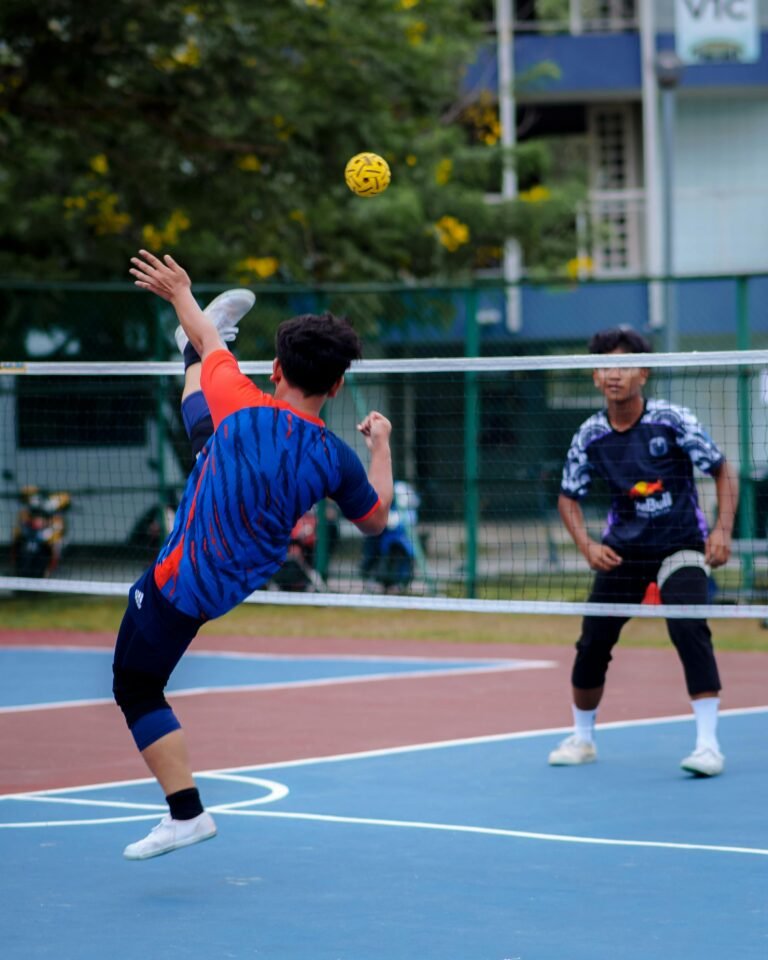
The Amazing World of the Sepak Takraw Ball
Imagine a sport so dynamic and acrobatic that it blends football, volleyball, martial arts, and pure athletic theatre. At its heart is one charmingly unique piece of equipment: the Sepak Takraw ball. So, what exactly is this curious sphere, and how did it come to delight fans across Southeast Asia – and now around the globe? Let’s dive into the story.
(If you’re curious, you can check out the official ball I recommend here: Takraw Marathon MT-201)
What Is a Sepak Takraw Ball?
At its simplest, a Sepak Takraw ball is a small, spherical ball, traditionally woven from rattan, a type of cane. Its name reveals the spirit of the sport: “Sepak” is Malay for “kick,” while “Takraw” is Thai for “woven rattan ball” – so Sepak Takraw literally means “kick a rattan ball.”
Originally crafted from rattan strips, modern versions often use synthetic materials or synthetic-rubber coverings, which bring durability and consistent performance. Synthetic balls must meet precise specs: 12 holes and 20 intersections, per official regulations.
Made to Specs: What Makes a Ball Competition-Ready?
Here’s the lowdown on what makes an official Sepak Takraw ball:
- Circumference:
- Men’s: ~42–44 cm (≈16.5–17.3 in)
- Women’s: ~43–45 cm (≈16.9–17.7 in)
- Weight:
- Men’s: ~170–180 g (≈6.0–6.3 oz)
- Women’s: ~150–160 g (≈5.3–5.6 oz)
These specifications ensure playability, control, and fairness in competition.
How Is It Made?
While traditional balls were handcrafted from rattan, modern manufacturing employs clever techniques:
- Rattan weaving: Artisans interlace thin, flexible rattan strips into spherical shapes with uniform holes and intersections.
- Synthetic alternatives: Durable plastic or rubber-covered versions are molded or woven to match the specifications, making them suitable for high-intensity, official play.
So the spirit of craftsmanship remains – even in the most high-tech versions. After all, it’s not just a ball; it’s a piece of sport-meets-art.
A Spirited History: Games, Royalty, and Rule-Makers
Now, let’s rewind to the earliest days of this fascinating game.
Origins: From Royal Courts to Public Play
The sport traces back to the 15th century in the Malacca Sultanate (modern Malaysia), where it was enjoyed by members of the court – and yes, the ball was already that iconic rattan weave. The famous Malay chronicle, the Sejarah Melayu (Malay Annals), records this pastime.
It likely evolved from the ancient Chinese game Cuju, in which players kicked feather-stuffed balls as a form of training or entertainment – echoing the aerial finesse seen today.
Enter the Net: The Birth of Modern Sepak Takraw
Jump ahead to 1945, Penang, Malaysia. Hamid Mydin, along with local players like Mohamed Abdul Rahman and Syed Yaacob, introduced a net to Sepak Raga, turning it from freeform fun into structured competition. The new version – Sepak Raga Jaring (“net” added) – held its first tournament that year.
By 1960, officials from Malaysia and Thailand convened in Kuala Lumpur to standardize rules – and the name “Sepak Takraw” was officially adopted.
Soon after, the Malayan Sepak Raga Federation formed (June 25, 1960), marking institutionalization at the national level.
Global Game: Governing Bodies and Games
In 1982, synthetic balls debuted, offering modern performance while preserving traditional design.
The International Sepaktakraw Federation (ISTAF) formed in 1988, uniting countries under one governing body with global ambitions – like gaining Olympic recognition by 2026.
Sepak Takraw became a staple at major events:
- Southeast Asian Peninsular Games (SEA Games): included since 1965.
- Asian Games: medal sport since 1990.
Today, ISTAF boasts around 50 national associations and aims to bring the sport to 75 countries worldwide.
Where to Buy an Official Sepak Takraw Ball
If you’re ready to feel the real thing in your hands, the Takraw Marathon MT-201 is an official standard ball that delivers the authentic Sepak Takraw experience. It’s built to competition specs, whether you’re training, playing in a league, or just curious about this beautiful sport.
Grab yours here: Takraw Marathon MT-201 on Amazon
When Tradition Meets Innovation
Isn’t it wild how a ball made from woven plant cane morphed into a thrilling, globally competitive sport? Today’s players might not know the artisan’s fingers that wove their rattan ball – but they sure admire the elegance and precision it represents.
Ready to Play or Learn More?
This little ball packs a big cultural and athletic punch. Whether you want to start playing, collect one as a sports curiosity, or simply display a piece of Southeast Asian sporting history, it’s a conversation starter like no other.
Quick Recap Table
| Topic | Highlights |
|---|---|
| What it is | Woven rattan (or synthetic) sphere with 12 holes and 20 intersections |
| Modern specs | Circumference: 42–45 cm; Weight: 150–180 g |
| Material evolution | Rattan → Synthetic (1982 onwards) |
| Origins | Malaysia, 15th century (Sejarah Melayu) |
| Modern form | Net version in Penang, 1945; Official name in 1960 |
| Governance | ISTAF formed 1988; Olympic goal by 2026; SEA Games & Asian Games legacy |


